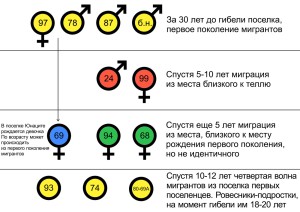 Mariya B. Mednikova
Mariya B. Mednikova
The Institute of Archaeology RAS, Moscow, Russia (medma_pa@mail.ru)
Keywords: Eneolithic, tell Unatsite, Thrace, Bulgaria, ratio of strontium isotopes, population mobility, microfocus digital radiography of human tubular bones, markers of physiological stress
The elaboration of new instrumental methods gives an insight into the influence of deep-seated historical processes on the quality and way of human life. Tell Yunatsite on the Thracian plain has been investigated by a joint Bulgarian-Russian expedition for many fieldwork seasons. An Eneolithic layer with traces of destruction yielding the remians of the inhabitants of the settlement who had died a violent death was excavated among others. This paper discusses the results of an analysis of the ratio of isotopes of strontium in dental enamel of the people who were for the most part contemporaries and neighbours at Tell Yunatsite. Contrary to the expectations only a single sample, that of a woman 30 years old, no. 69, shows the isotope signature characteristic of local conditions. At least two groups originating from different areas with geochemical characteristics differing from those of Yunatsite can be distinguished. The tell is characterized by high strontium values (0.711363) typical of old mountains and, seemingly, of the Balkans as a whole. Yet the most numerous and aged (40 – over 50 years at the time of death) group of migrants is united by high values of 87Sr/86Sr (0.708) indicative of their origin from the areas of either loess soils or recent rock formations. Their coming to the tell took place not earlier than 30 years before the death at Yunatsite, which can be determined by the time of formation of teeth of the second generation having recorded geochemical environment of the locality where these people spent their childhood. Moreover, an influx of younger people, both men and women, from this and other sites, was repeatedly attested in the lifetime of this generation during the existence of the Yunatsite settlement. Evaluation of occurrence of markers of physical stress undergone during one’s childhood including the so-called Harris lines (HL) on X-ray photographs of small tubular bones was made for the Eneolithic group of Yunatsite. A high level of negative influence in childhood (more than 77% of multiple HL), especially among the men of the first generation of immigrants, was revealed. On the whole, our data imply a high level of mobility, exogamy and complex social ties of the population of the Balkans in the Eneolithic.







